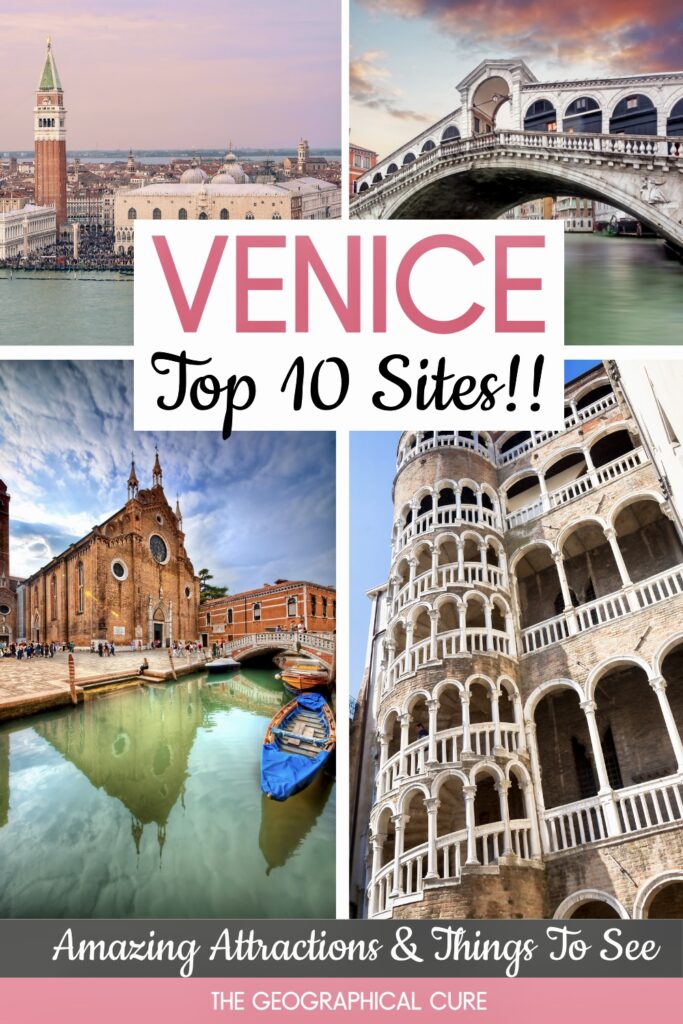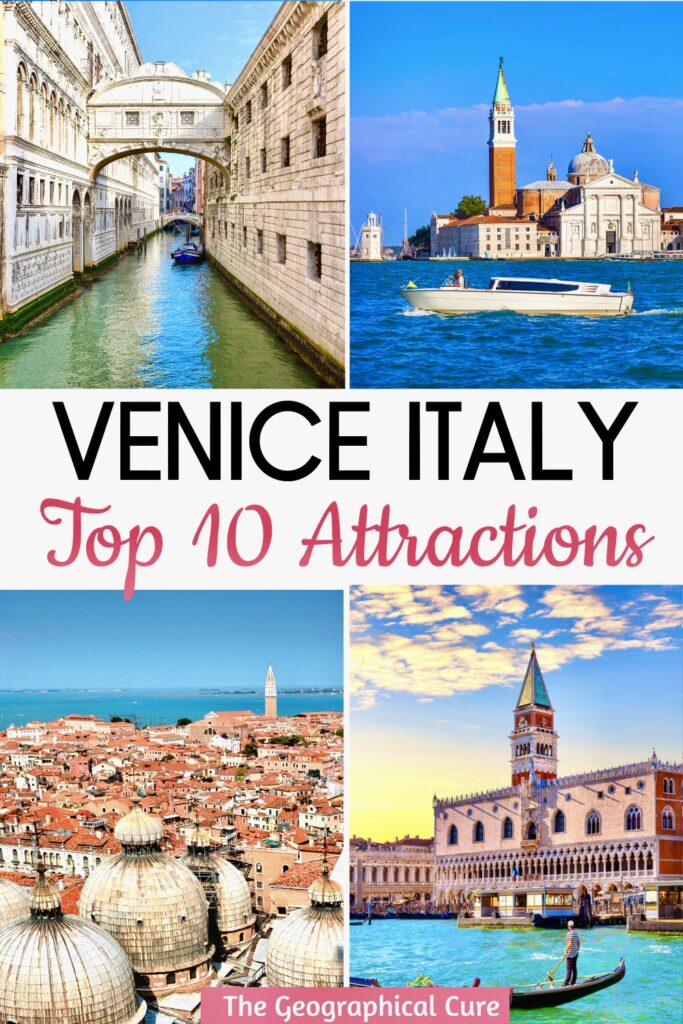Venice is a canal-crossed city rising, somewhat improbably, from the Venetian Lagoon. It’s one of the most singular cities on planet earth.
Not only is Venice visually stunning, but it’s home to some of the most important monuments in Italy.
I could spend weeks writing about them. But I’ve winnowed my list down to the top 10 sites in order of importance. I’ve ranked them based on their historic and artistic value.
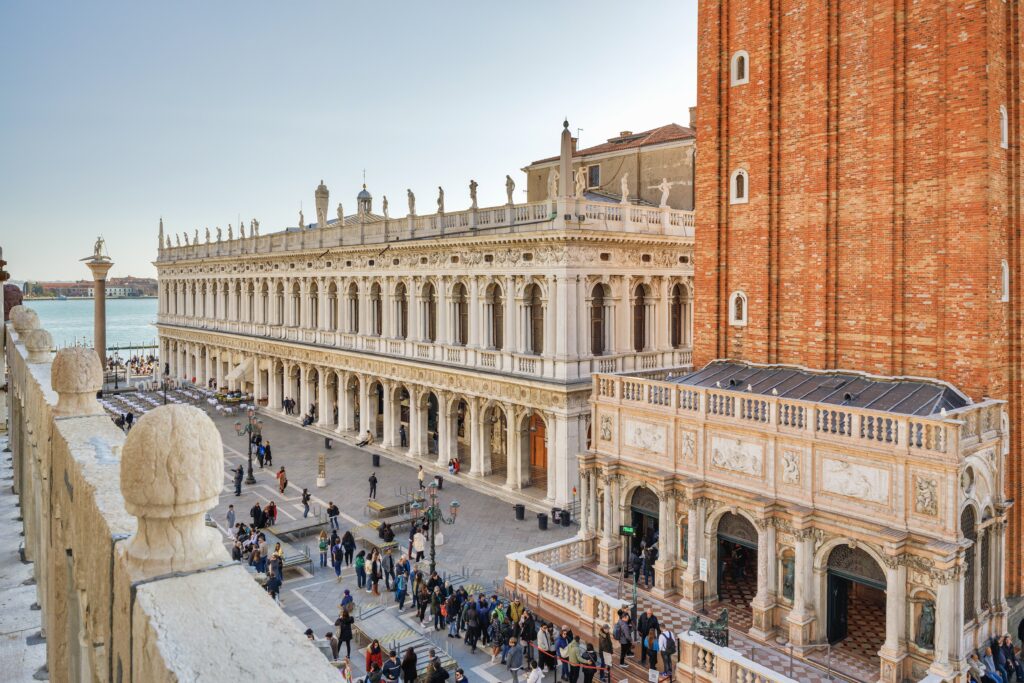
Top Sites In Venice
1. St. Mark’s Square
This beautiful square is absolutely amazing and home to so many of Venice’s historic monuments — St. Mark’s Basilica, the Campanile, the Procuratie Vecchie, and the Musee Correr.
This is where 90% of tourists spend their time in the city, so you should expect crowds.
The most important monument is the magnificent St. Mark’s Basilica. It’s the most important church in Venice and one of the most important in Christianity.
It’s a unique expression of architecture, in an Italo-Byzatine style.
The main facade features two levels of five arches, supported by 500 columns and crowned with intricate Gothic tracery. Mosaics depict stories of St. Mark. The most striking feature is the sculptures, especially those adorning the central portal’s curved arches.
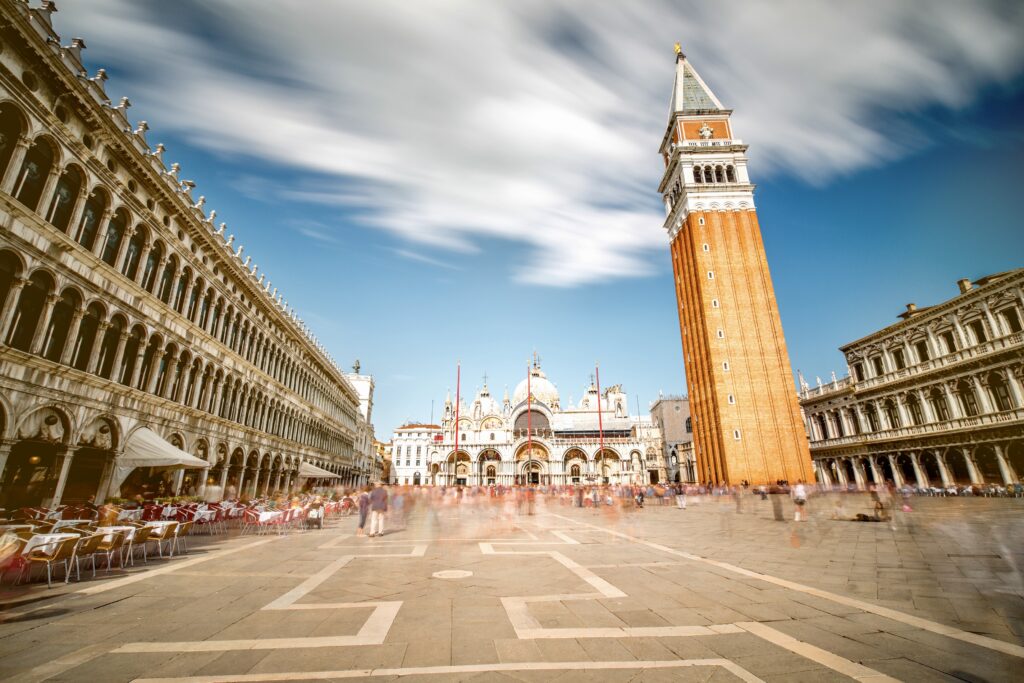
If you think the outside is astonishing, wait until you step into the mesmerizing interior. It’s a dazzling mosaic wonderland, with a whopping 90,000 square feet of decoration.
You can’t visit without a timed entry skip the line ticket. For a truly illuminating experience of St. Mark’s Basilica, I recommend opting for the evening tour. By day, the mosaics are harder to see in the dimly lit interior with daylight streaming in.
I’ve also enjoyed the terraces tour. The terraces provide a unique vantage point that offers breathtaking views of both the basilica’s architectural splendor and the surrounding beauty of Venice.
The Procuratie Vecchie was expanded and renovated in the 16th century under the supervision of the architect Bartolomeo Bon. It’s a beautiful Renaissance building in the classical style, with rows of arches and a rhythm of columns that provide a covered walkway for pedestrians.
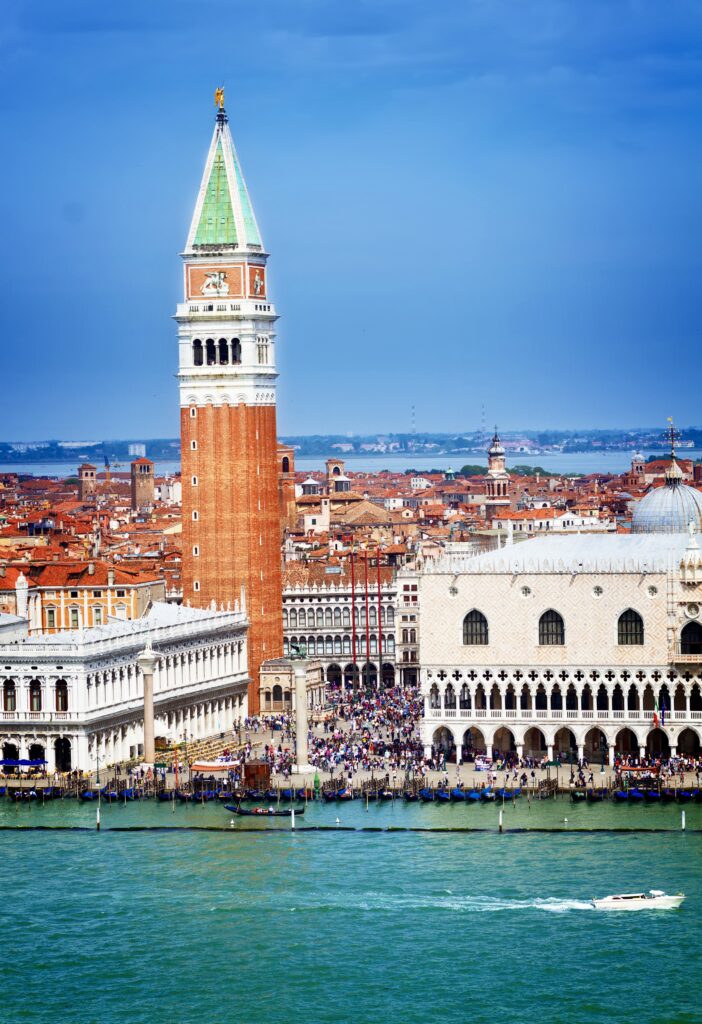
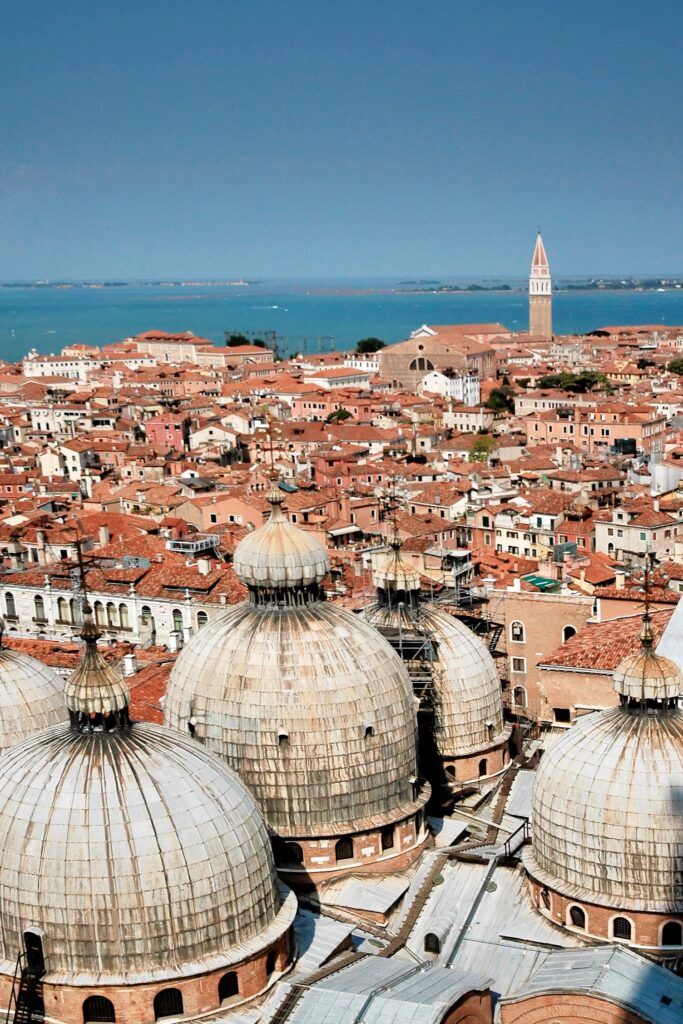
It was once the office and residence of the Procurators of Saint Mark. They were high officials of the Venetian Republic responsible for the administration of the city’s wealth.
It opened to the public for the first time in 2022. You can visit the newly restored fourth and fifth floors. Click here to book a ticket.
Tip: The cafe at the top has a rooftop terrace for more views.
St. Mark’s Square is also home to the iconic Campanile, the basilica’s bell tower. It stands at an impressive height of 300 feet.
Unique for its time, the bell tower is equipped with an elevator. This offers a convenient way up to enjoy the panoramic views, although you should expect lengthy queues. To avoid this, be sure to pre book a skip the line ticket.
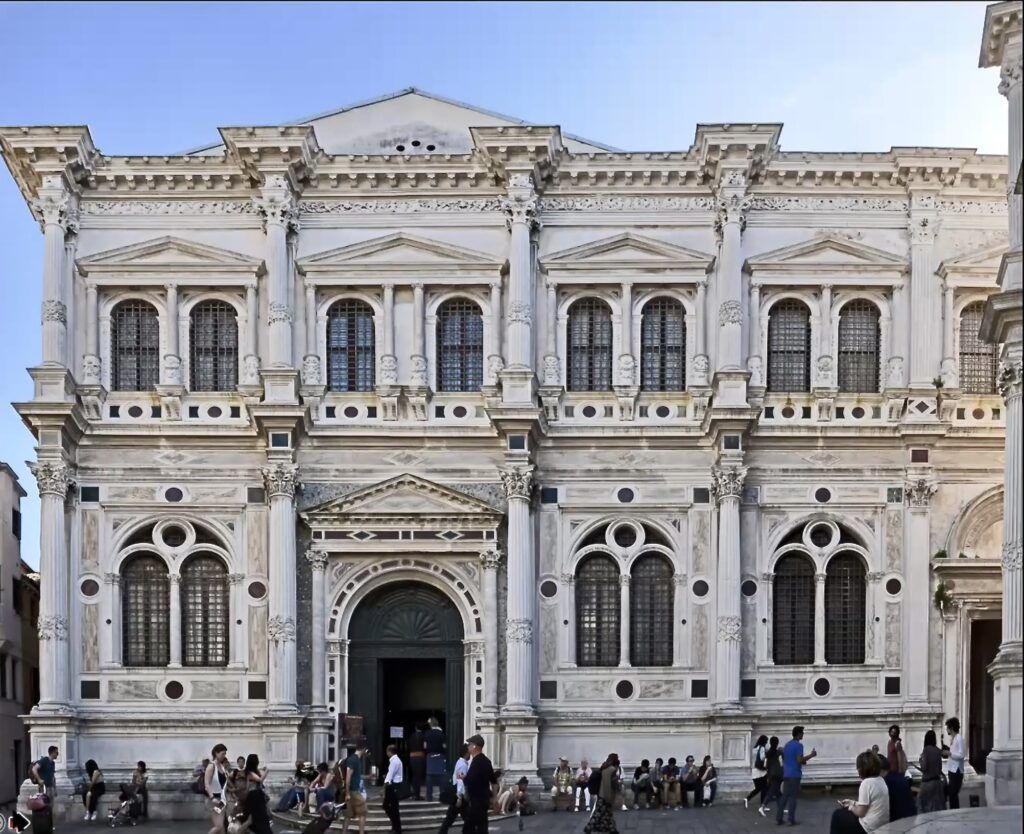
2. Scuola Grande di San Rocco
The Scuola Grande di San Rocco is one of Italy’s most exquisitely adorned spaces. It served as the illustrious base for the San Rocco Brotherhood, a Venetian confraternity.
Renowned Renaissance master Tintoretto painted nearly the entire interior, transforming the space into a breathtaking canvas. He worked on and off for 24 years.
The sheer proportion and quality of the artwork makes it a singular and unique space.
Tintoretto’s extensive series of frescoes in the Chapter Hall earned it the nickname “Venice’s Sistine Chapel.”
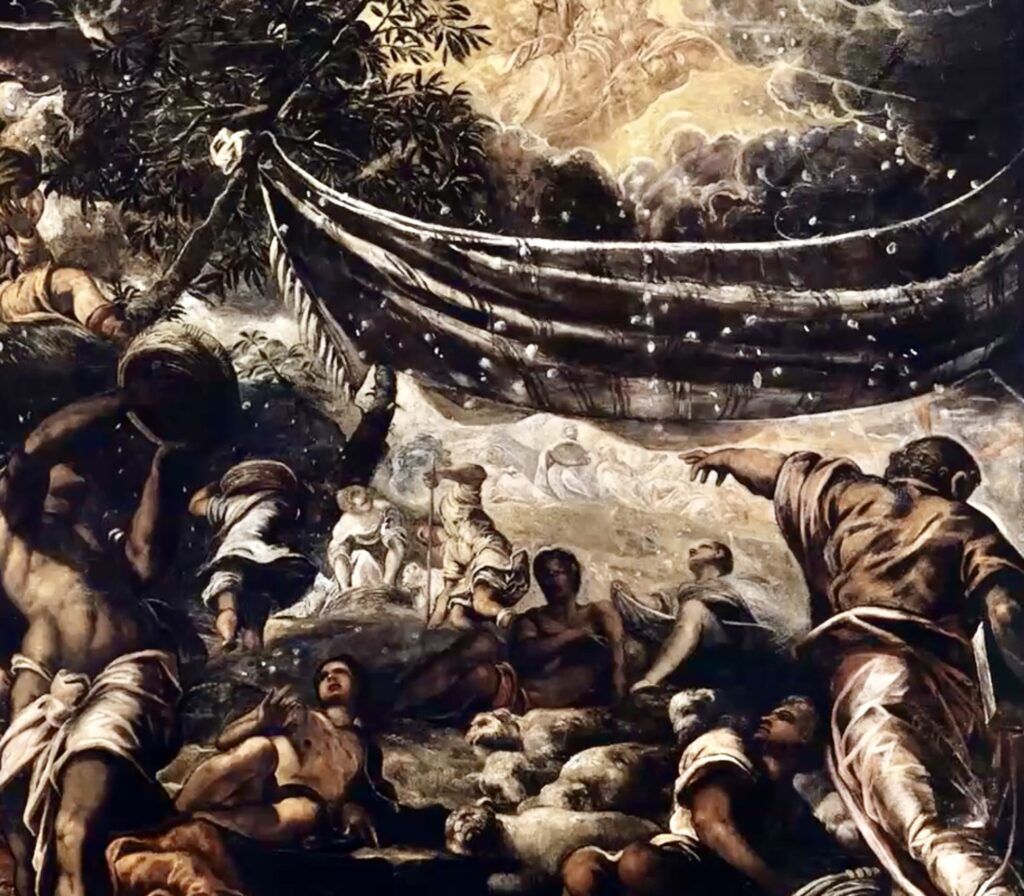
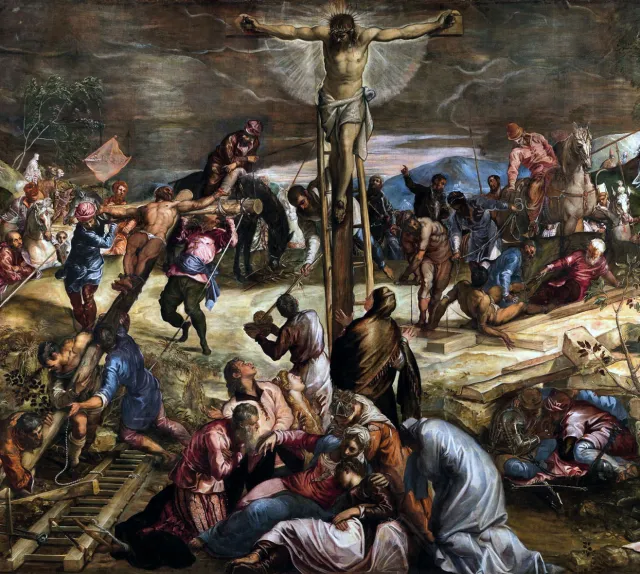
Much like its Roman counterpart, Tintoretto’s work can only be appreciated in the specific setting it was created for, offering visitors a unique, site-specific art experience.
Old Testament subjects are depicted on the ceiling and New Testament subjects are on the walls. Any one of these paintings would be among the top paintings in any museum.
Aside from Tintoretto, there are some lovely pieces by Titian, Giorgione, and Tiepolo.
3. Accademia Gallery
The Galleria dell’Accademia holds the world’s most important collection of Venetian painting. It’s Venice’s top site for art lovers.
The museum’s exhibits guide you through Venetian art history, from the Byzantine and Gothic periods to the Renaissance and ending in the Rococo style of the 18th century.
You will discover a remarkable collection of Venetian masterpieces.
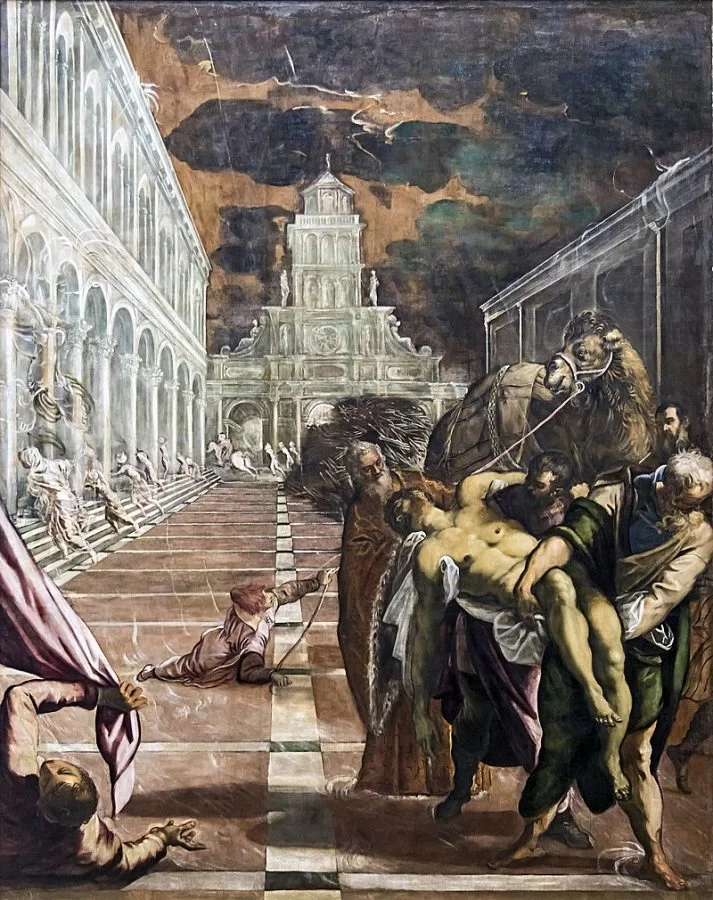
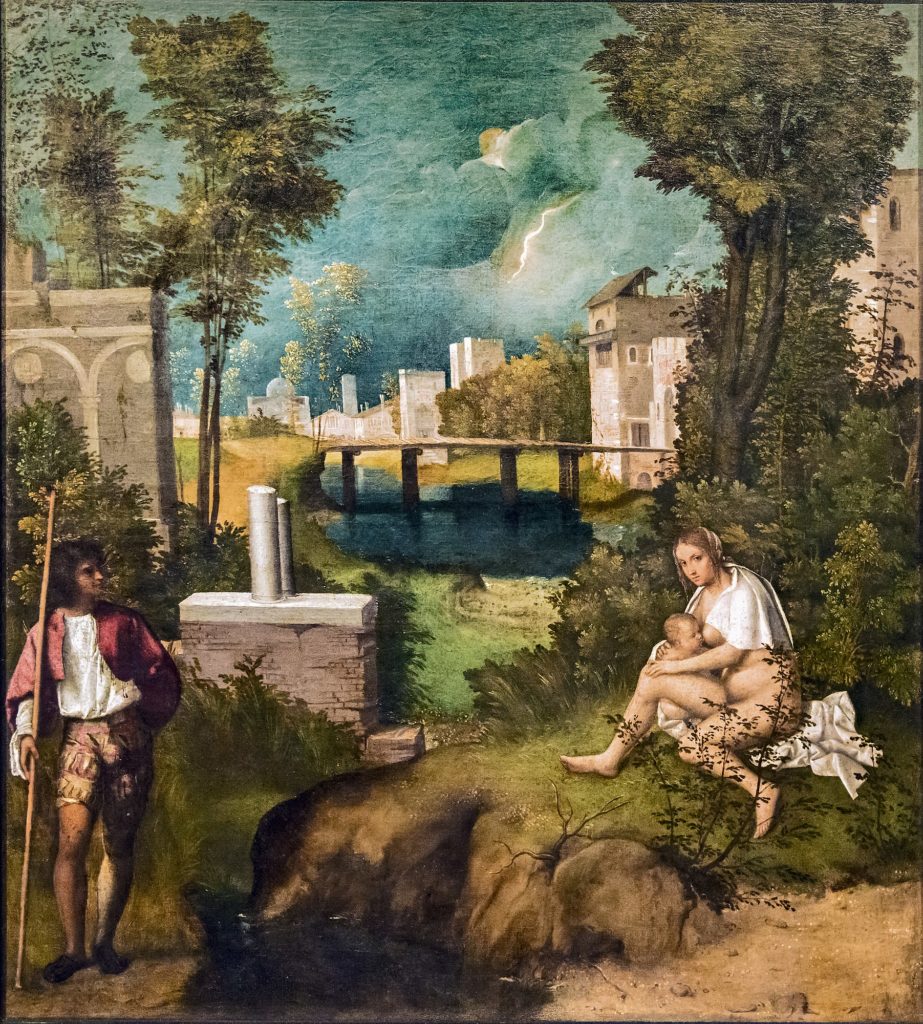
You’ll see captivating narratives by Veronese, vibrant hues from Titian, dark and dramatic scenes by Tintoretto, and treasures by Tiepolo, Bellini, Canaletto, Carpaccio, and Giorgione.
The museum itself, once a scuola, boasts stunning architecture, complete with gorgeous ceilings.
With the Accademia often quiet, you’ll have the chance for a more intimate engagement with the artworks.
>>> Click here to book a tour of the Accadmia
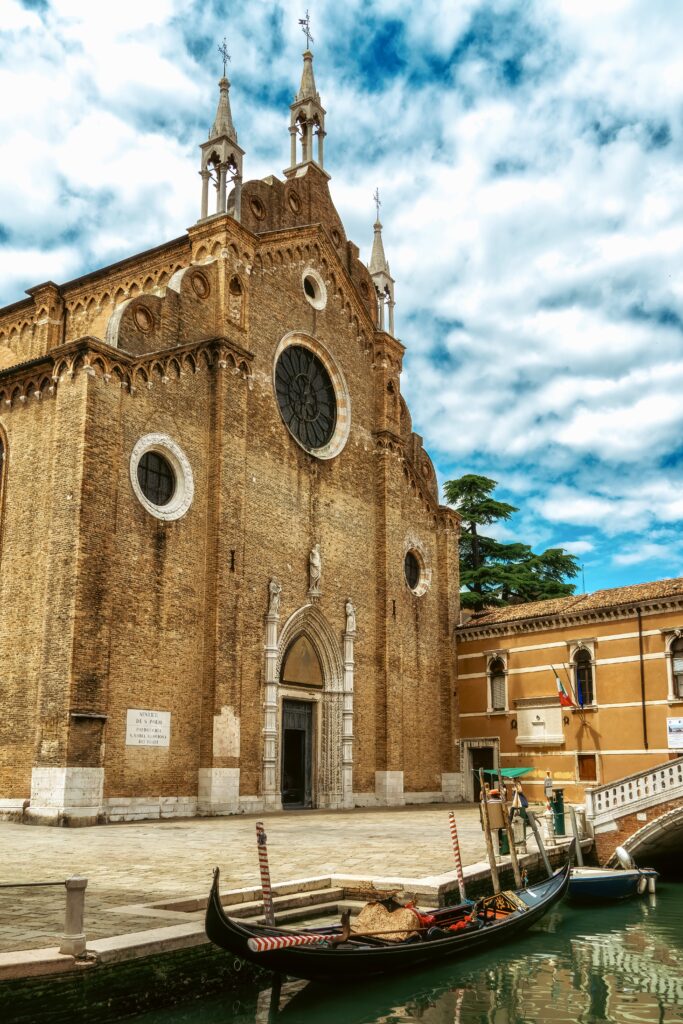
4. Frari Church
The Basilica of Santa Maria Glorioso dei Frari is one of Venice’s top sites and most beautiful churches. It’s known simply as the “Frari.”
The Frari is one of the two largest churches in the city. It was built in the middle of the 14th century by an unknown architect.
The exterior, a massive brick pile, is impressive enough. But inside it’s a mini museum, home to some of the greatest Renaissance art in Venice.
The main altarpiece is Bellini’s masterpiece Madonna, Child, and Saints.
You can also see two of Titian’s most important paintings, the Pesaro Altarpiece and the Assumption of the Virgin Mary. In them, Titian broke away from prevailing norms and created theatrical paintings, with unusual perspectives.
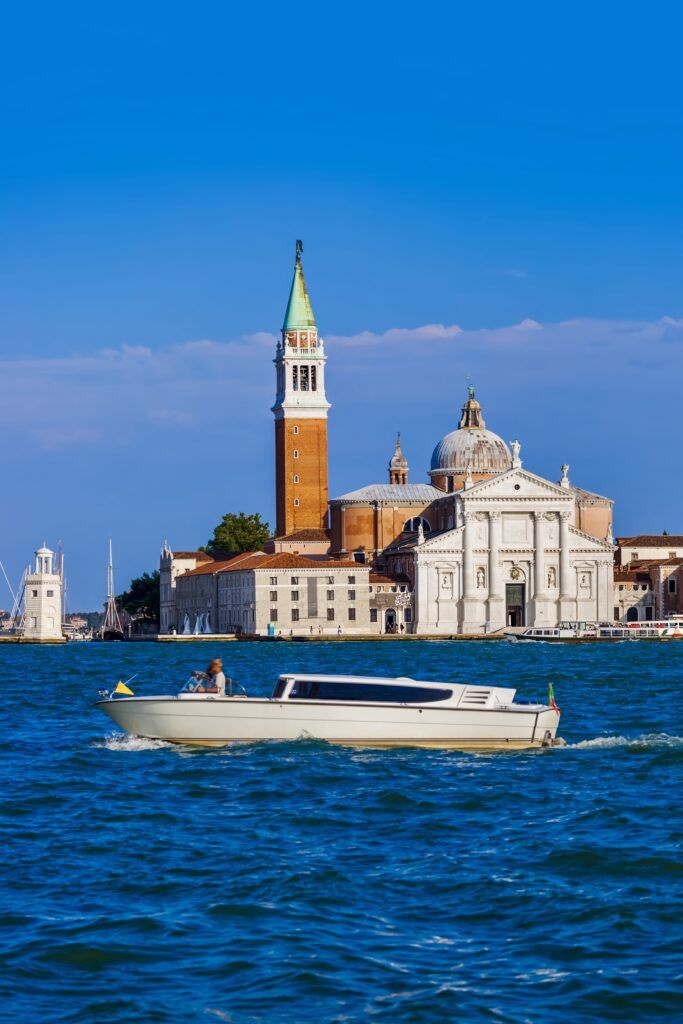
5. Church Of San Giorgio Maggiore
You’ve all seen this church. If you’re standing in St. Mark’s Square, you can spot the exquisite facade exactly opposite on the island of San Giorgio. you get there by vaporetto.
The church was designed by the great Renaissance architect Andrea Palladio. It’s designed on classic principals of architecture. It almost looks like a temple.
Inside, it’s very bright and simple. The architecture functions as both structure and decoration. It’s all about proportion and harmony.
In the refectory (monks’ dining hall), you’ll see a reproduction of the Wedding Feast at Cana by Paolo Veronese. The original is in the Louvre, taken during Napoleon’s plundering in the 18th century.
You can also buy a ticket to take the elevator up to the top of the bell tower. From there, you have spectacular views of Venice and its waterways.
>>> Click here to book a tour with a water transfer
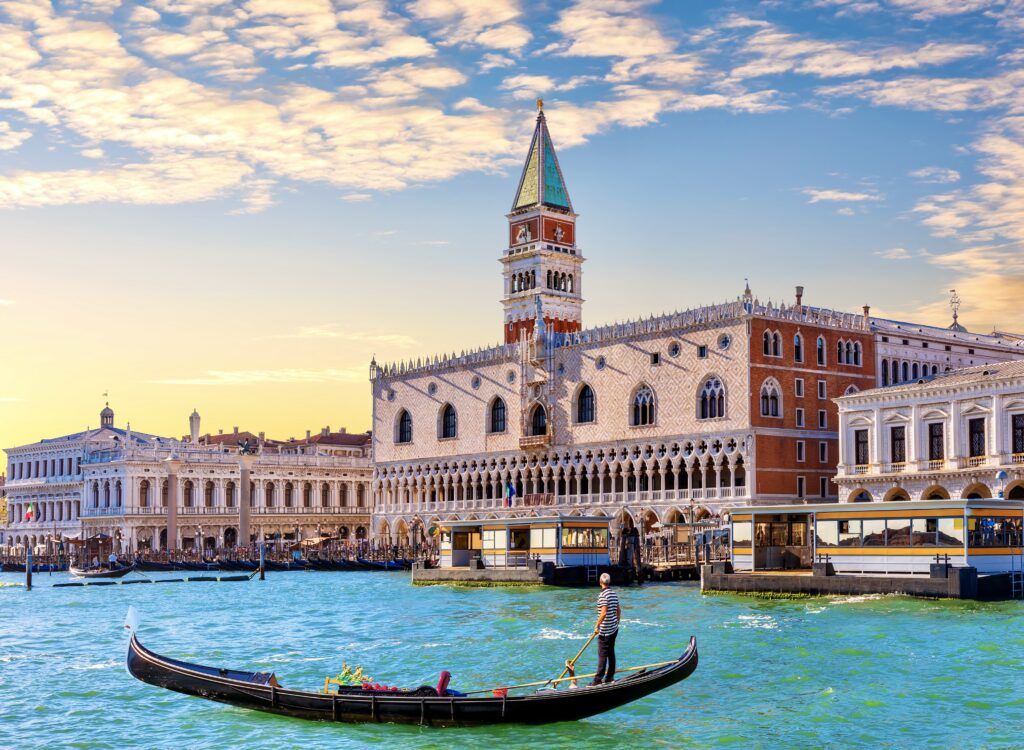
6. Doge’s Palace
The Doge’s Palace is one of the top sites in Venice. You might think it should be ranked higher than #6.
The outside is spectacular, but the art inside is less exciting.
The palace was the residence of the Doge of Venice, the supreme authority of the former Venetian Republic. It also housed the government, courtrooms, and prison cells.
The palace architecture is an exotic blend of Byzantine, Gothic, and Renaissance styles, reflecting the various phases of its construction and the diverse influences on Venice.
The most striking features are the splendid Gothic elements. The facade has a series of pointed and ogee arches, lancet windows, and delicate tracery, all of which create a sense of lightness and elegance.
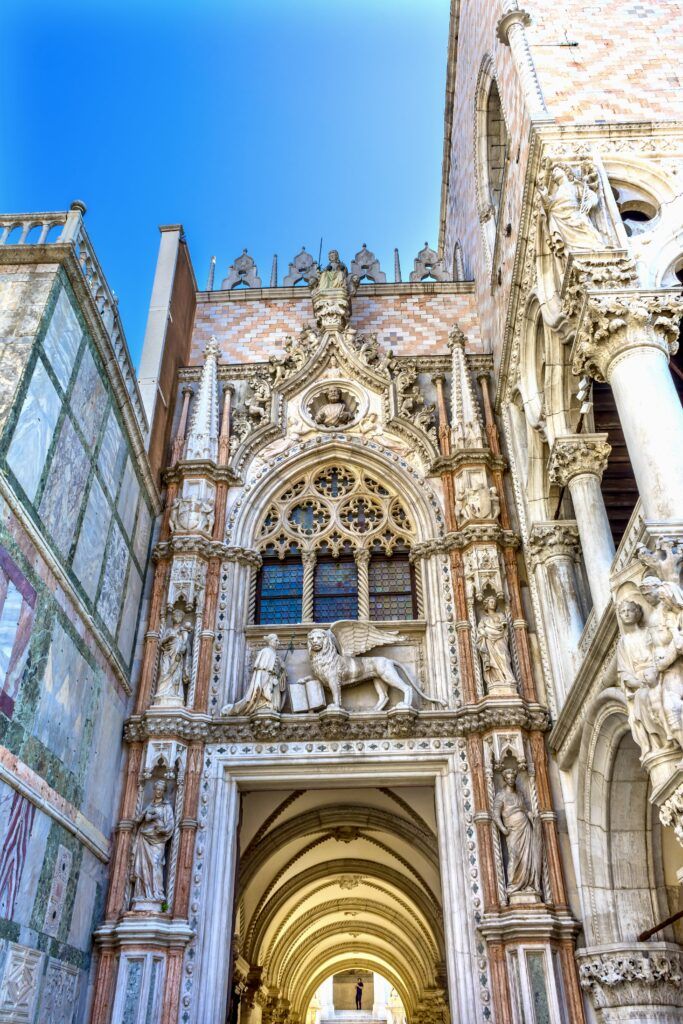
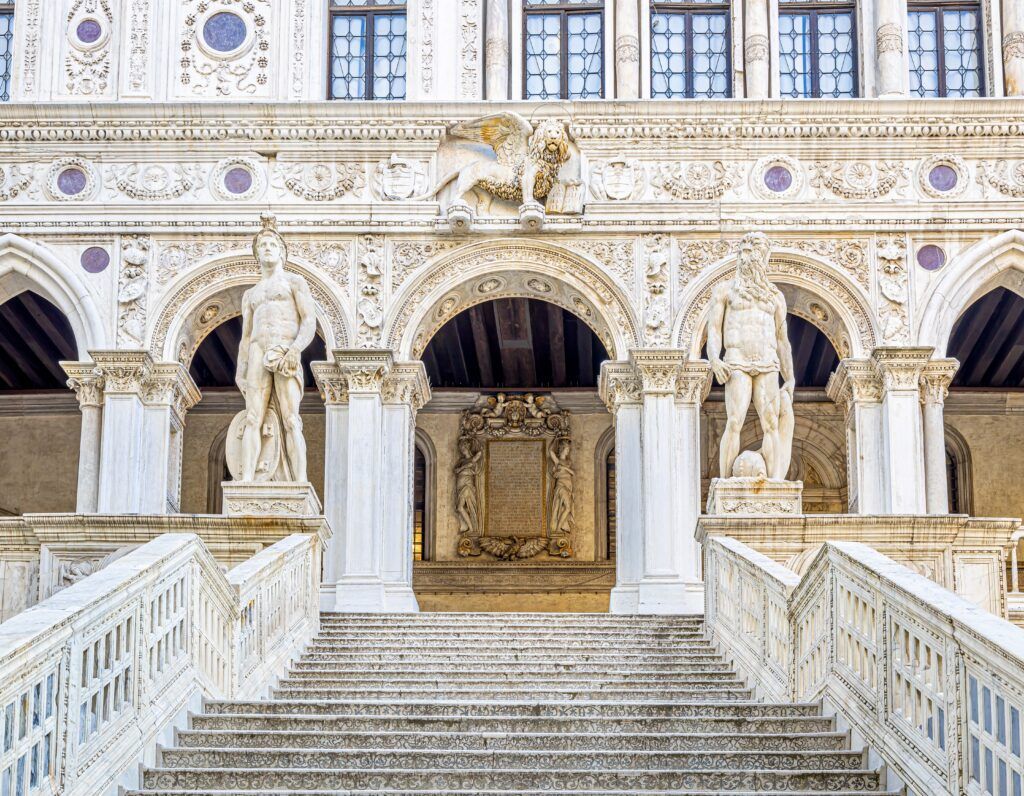
The famous Porta della Carta, from 1440, is the gorgeous main entrance to the palace. It was paid for by the doge, who you can see kneeling to St. Mark in the central sculpture.
Behind the doors is the imperial Staircase of the Giants, dating from 1485. There are two massive statues of Mars and Neptune by renowned Renaissance sculptors Jacopo Sansovino and Alessandro Vittoria.
They symbolize Venice’s dominance at land and sea. The staircase was where the doges were invested and received their conical hats called the corno ducale.
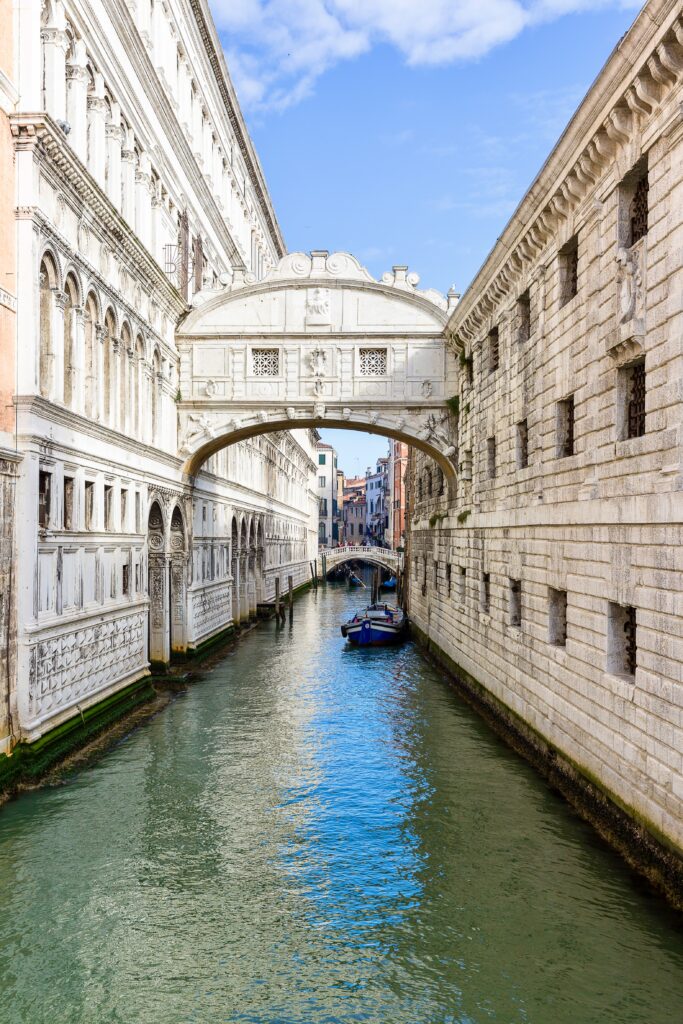
Attached to the palace is the iconic Bridge of Sighs. Prisoners walked across this bridge on their way to the new prison. As they did, they sighed, peering at their city for the last time.
Inside, you can visit the doges’ apartments, the Chamber of the Great Council, other splendid rooms, and see the world’s largest canvas painting — Il Paradisio by Tintoretto.
You’ll want to pre-book a skip the line reserved entry ticket and you may want to book a VIP secret itineraries tour to see the prisons and torture chambers.
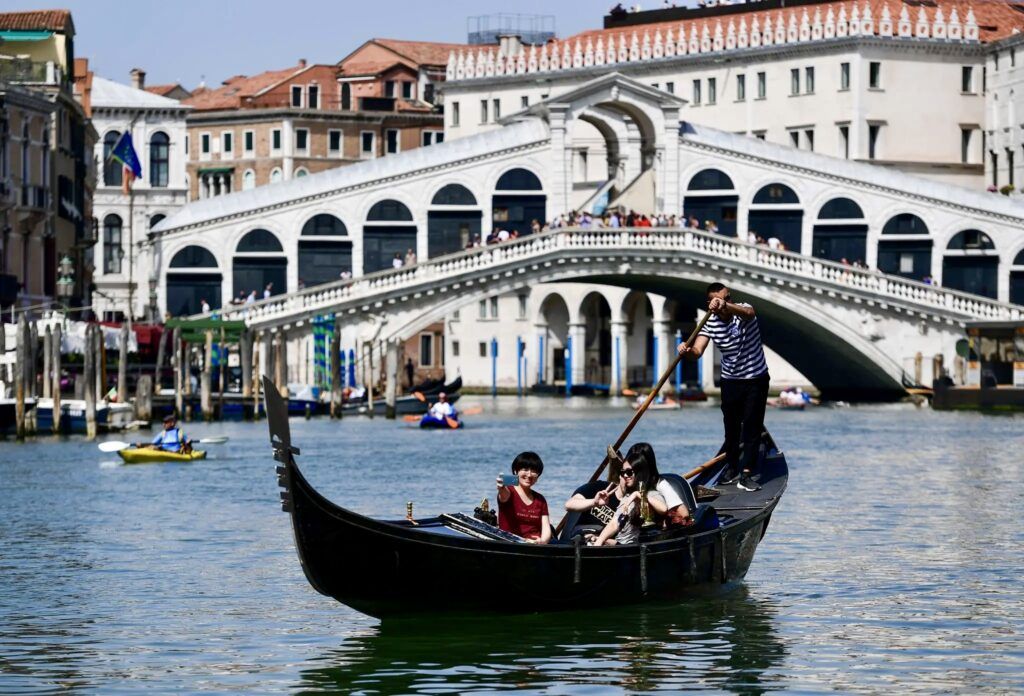
7. Rialto Bridge
The Rialto Bridge is a handsome piece of architecture designed in the 16th century by Antonio da Ponte. He beat out some other big names for the commission.
The Rialto functions as a continuous staircase with a single arch over the Grand Canal. The bridge is flanked by covered walkways known as loggias.
These spaces once bustled with commercial merchants selling a variety of goods Today, they are a marketplace for tourists.
The bridge is always very crowded. And you may find it difficult to actually cross it. But it’s a great place to take a photo of the Grand Canal.
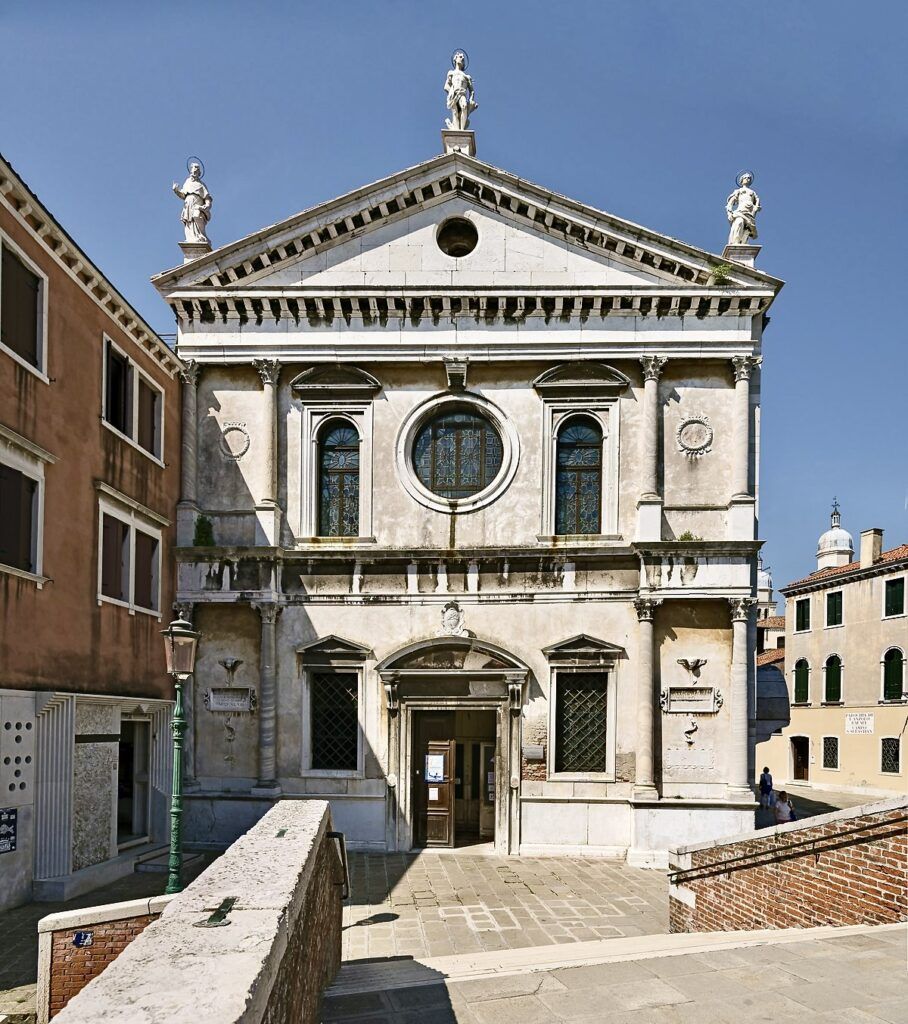
8. Church of San Sebastiano
The church itself was begun in the early 16th century and completed in 1662. It’s dedicated to St. Sebastian. You may recall that he is always full of arrows, though he survives the attack.
The church isn’t much to look at from the exterior. But inside, it’s a shrine.
It was all decorated by one artist, Palo Veronese, one of the most important Venetian painters ever. This is his defining work of art.
The paintings, executed over 30 years, are fully restored thanks to Save Venice.
The scenes, typical of the artist, are dynamic and busy. The main altarpiece shows the saint, stabbed by arrows, surrounded by other saints looking above to Mary’s assumption.
Veronese is buried inside the church, near his bust.
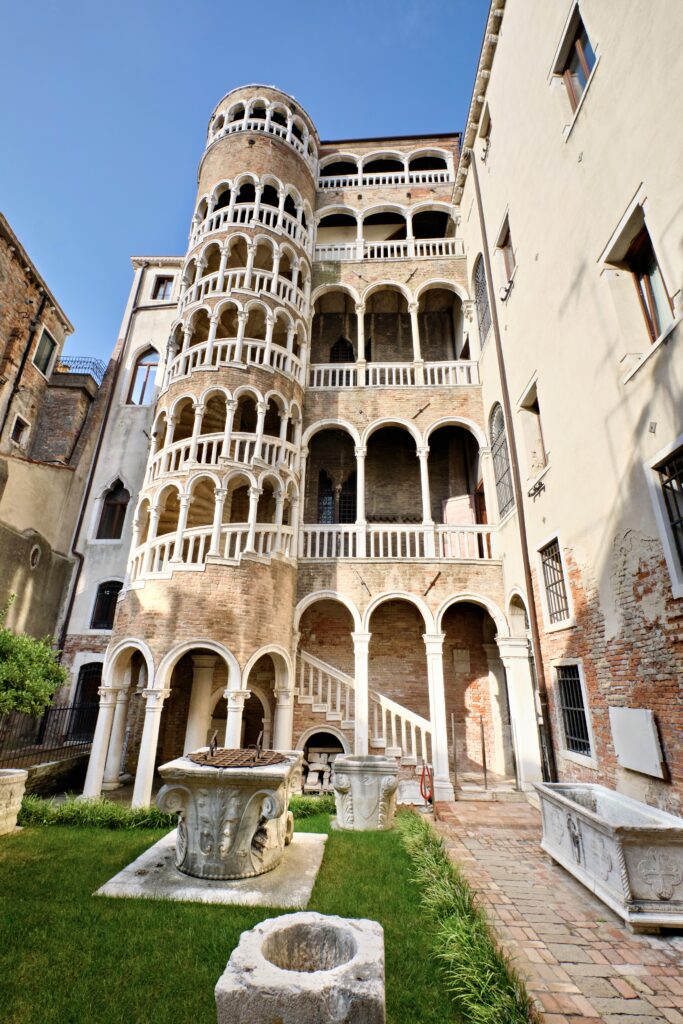
9. Bovolo Staircase
The Bovolo Staircase was designed in 1499 by Giorgio Spavento. It’s part of the Palazzo Contarini del Bovolo.
It’s a multi-arched spiral staircase attached to the palace. It slinks up to the top like a snail, which is what bovolo means.
You can buy a ticket and then begin your ascent up the beautiful staircase. It’s a lot of fun to do.
Fortunately, the Bovolo Staircase is not that well known. Once you’re at the top, you have beautiful views of Venice’s rooftops.
>>> Click here to pre-book a Bovolo ticket
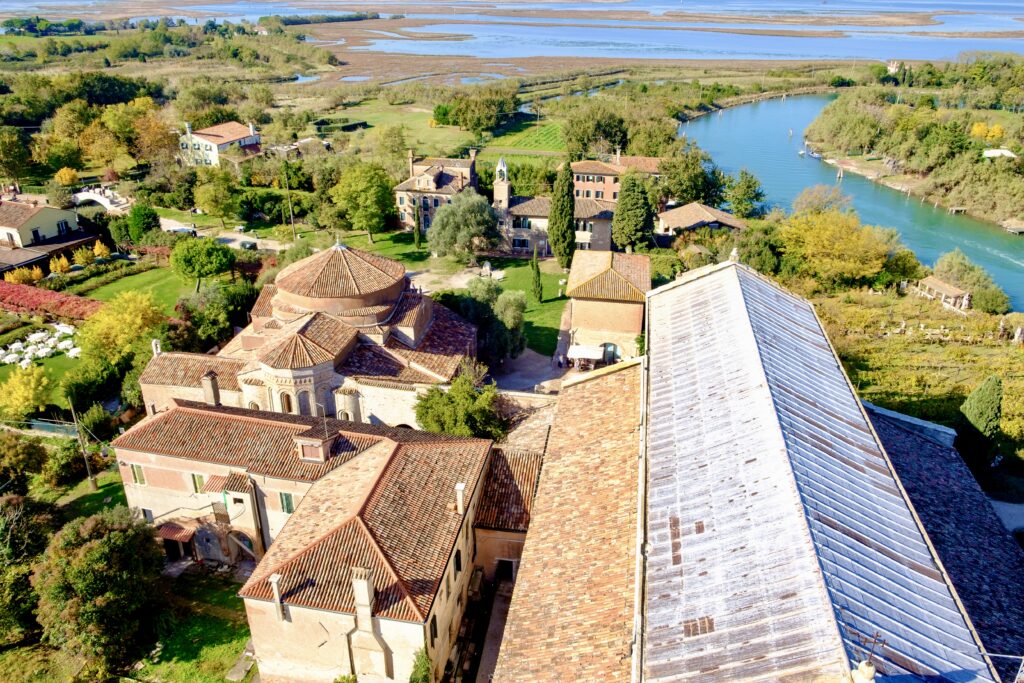
10. Torcello
Torcello is a lagoon island near Murano. It’s where the history of Venice begins.
It was the earliest populated island in the Venetian Lagoon, its marshes providing a natural defense. A visit to Torecello also has the benefit of getting you away from all the craziness of Venice proper.
On the island is the beautiful Santa Maria dell’Assunta. The church is ancient, dating from the 7th century!
Once inside, you will feel like you’ve stepped into the past. The interior is simple with a central nave and two side aisles.
The walls are brick and there’s a beautiful painted rood screen. In the apse, there’s a golden 12th century mosaic depicting Mary and the 12 apostles.
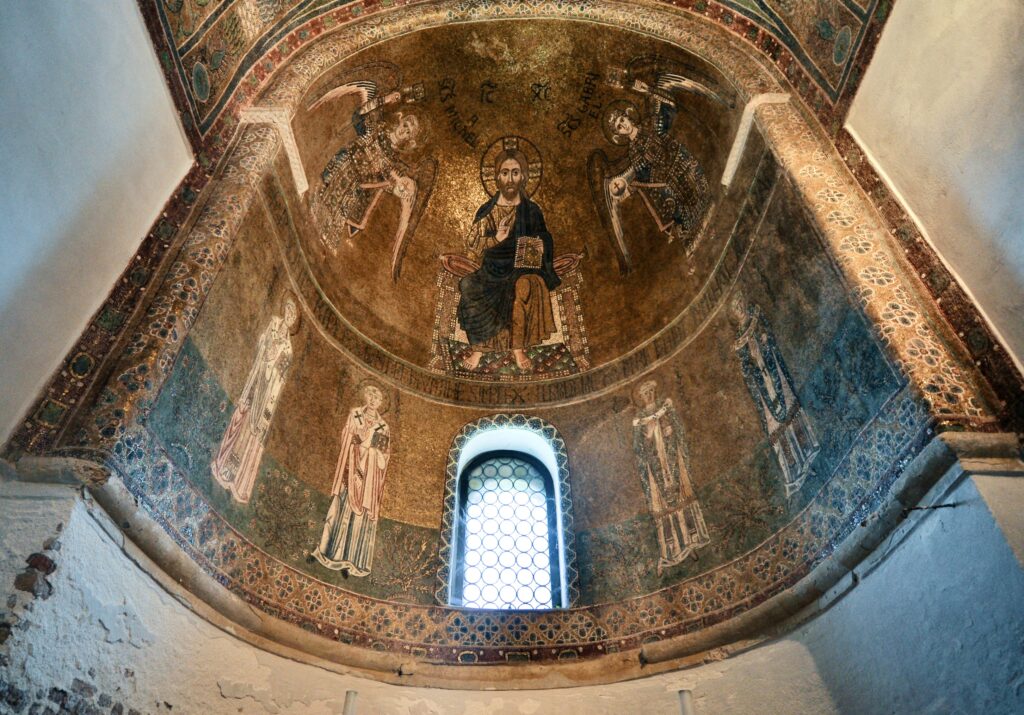
You can climb the bell tower for views of the lagoon.
The Throne of Atilla is an ancient stone chair located near the basilica. It’s become an emblematic symbol of Torcello, surrounded by myths and legends regarding its origins and use.
Tip: If you want to stop for lunch, I recommend Locanda Cipriani.
I hope you’ve enjoyed my guide to the top 10 sites in Venice. You may find these other Venice travel guides useful:
- 1 day in Venice itinerary
- 2 day itinerary for Venice
- Top attractions on the Grand Canal
- History of Venice in a nutshell
- Guide to the Peggy Guggenheim Museum
- Guide To Ca’ Rezzonico
- Things to do in San Polo
- Things to do in the Dorsoduro
- Guide to Scuola Grande di San Rocco
Pin it for later.

